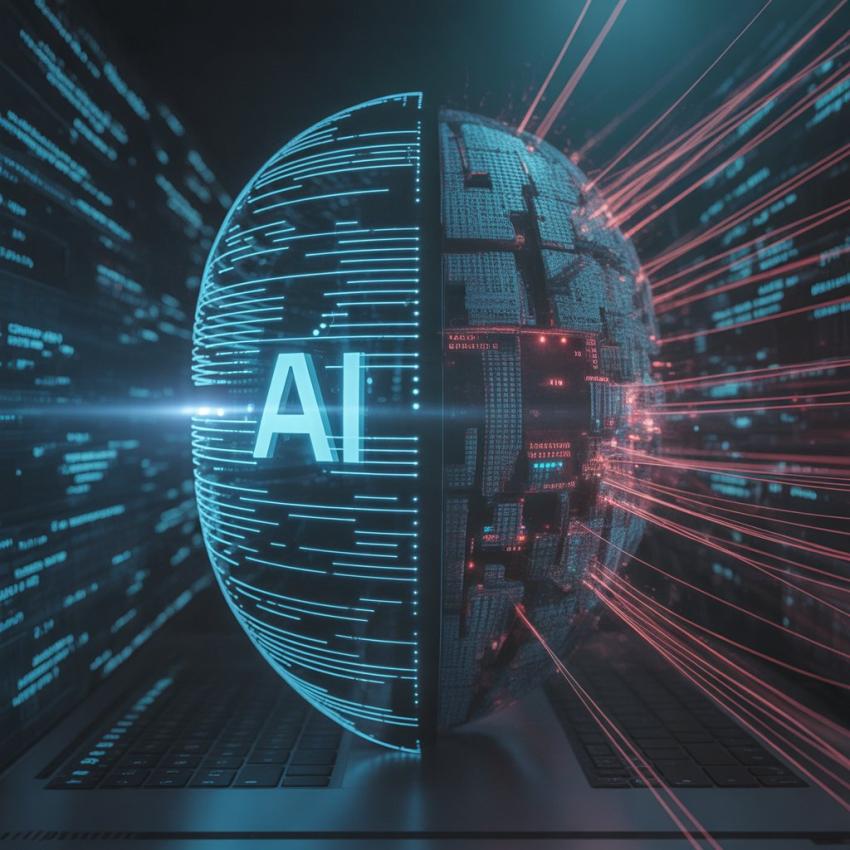
Artificial intelligence has transformed the way we interact, work, and lead our lives in the digital realm. With the advance of AI, both cybercriminals and security practitioners are employing it. The intersections of AI and cybercrime represents one of the most complex issues of our time in which exploitation and innovation once again coexist.
AI: The Duality of Modern Security
AI is fast becoming a keystone of cybersecurity. Machine learning algorithms are being leveraged to in real-time analyze a plethora of data, quickly identify anomalies, and predict potential future threats. In both network monitoring and malware detection, AI-based products and services can assess and respond to suspicious events all in a remarkably faster time frame than human teams normally could.
That said, we could be victims of that same intelligence. For example, hackers are using AI to automate and enhance attacks like creating convincing phishing emails, cracking passwords, and even mimicking human behavior online. Ironically, the technology invented to safeguard and protect data can be manipulated to compromise it.
The Emergence of AI Cyber Crime
Many traditional cyber attacks required planning, practice, and time to execute. Today, with the use of tools powered by AI, even unsophisticated bad actors can execute extremely complex attacks at scale. Algorithms analyze system architecture for vulnerabilities, shape social engineering messages intended solely for a target, and adapt in real-time as a threat is encountered to improve improved chances of evading detection by security controls.
For instance, deepfake capabilities enable attackers to craft hyper-realistic, impersonated videos or audio clips that can fool employees, customers, or investors. Chatbots based on natural language processing can mimic legitimate users and suck information of value over the course of a conversation.
AI's biggest advantage in cybercrime is convenience. A single attacker can engage machine learning models, scan thousands of systems, find weaknesses, gather intelligence, and launch coordinated attacks- all without any human interaction.
A real world example of this is the Roger Keith & Sons insurance agency data breach.
The Roger Keith & Sons Insurance Agency Data Breach in 2025 is a story of how established organizations may be targeted by evolving cyber threats. An unauthorized party managed to penetrate the company systems via a classic phishing attack - something AI now makes much more convincing.
Using remote access tools, the attackers gained access to the networks, and exfiltrated sensitive data ("Data Breach", 2025), including social security numbers, financial data or identification elements. While there was no evidence that AI was in play, the sophistication and scope of recent phishing attempts showcases how automated technological tools can element traditional exploit effort.
This incident highlights a growing trend - as our defenses become smarter the attacks evolve to reflect that.
The Role of AI on The Battlefield.
In the future of cyber defense, the dynamic will turn into a balance of AI vs. AI. Security systems are already being trained to detect deepfakes, recognize algorithmic attacks, and inhibit malicious machine learning models; but staying one step ahead of attackers using their own AI to adapt quicker than your defenses will be tricky.
Another growing concern is adversarial AI, in which attackers intentionally fool an algorithm by supplying misleading data. This could ultimately result in a system missing real threats or misclassifying benign behavior and mislabeling it as a threat, creating a devastating miss.
Building Safe Guards to Counter Attack with AI.
If you want to combat AI-powered cybercrime, organizations will need to move past traditional means of defense. Here are some key methods to considering.
- Implementing zero-trust frameworks - no device, user, and/or process should ever be trusted by default.
- Model auditing of AI on a regular basis - to ensure discrimination(s), manipulation, and/or vulnerabilities aren't present in algorithms.
- Keeping a human-in-the-loop monitoring framework - AI can serve to support decision making in the collection and analysis of threats but isn't going to "replace" a human thinking through the security analysis process.
- Teaching cyber hygiene and educate employees - while having sophisticated tools may help organizations, human error will always remain a vector for breaches.
The future(s) of cybersecurity will be dictated by how efficiently humans and AI-enabled systems can work together to identify and react to different forms of sophistication.
Future Outlook
AI, in itself, is neither good nor bad—it reflects the intention of the people who use it. As we allow AI to permeate more aspects of our lives, its potential for harm can increase in parallel to its benefits. Cybercriminals will quickly take advantage of innovation, while defenders must be more adept.
The situation with the Roger Keith & Sons Insurance Agency is a cautionary tale that the line between safe and vulnerable is becoming thin. In a world where machines learn faster than humans, the best way to achieve digital resilience is by staying vigilant and ensuring we are innovating ethically and using the technology responsibly.
When artificial intelligence and cyber criminals come together, the difference will come down to one thing: whether we allow the algorithms to fight the fight for us- or we use algorithms to guide and protect us.




